8.6 /10 1 Votes8.6
8.6/10 IMDb Written by Masaru Gotsubo | 8.5/10 MyAnimeList 8.8/10 TV Original network Fuji TV | |||||||||||||||||||||||||||||||||
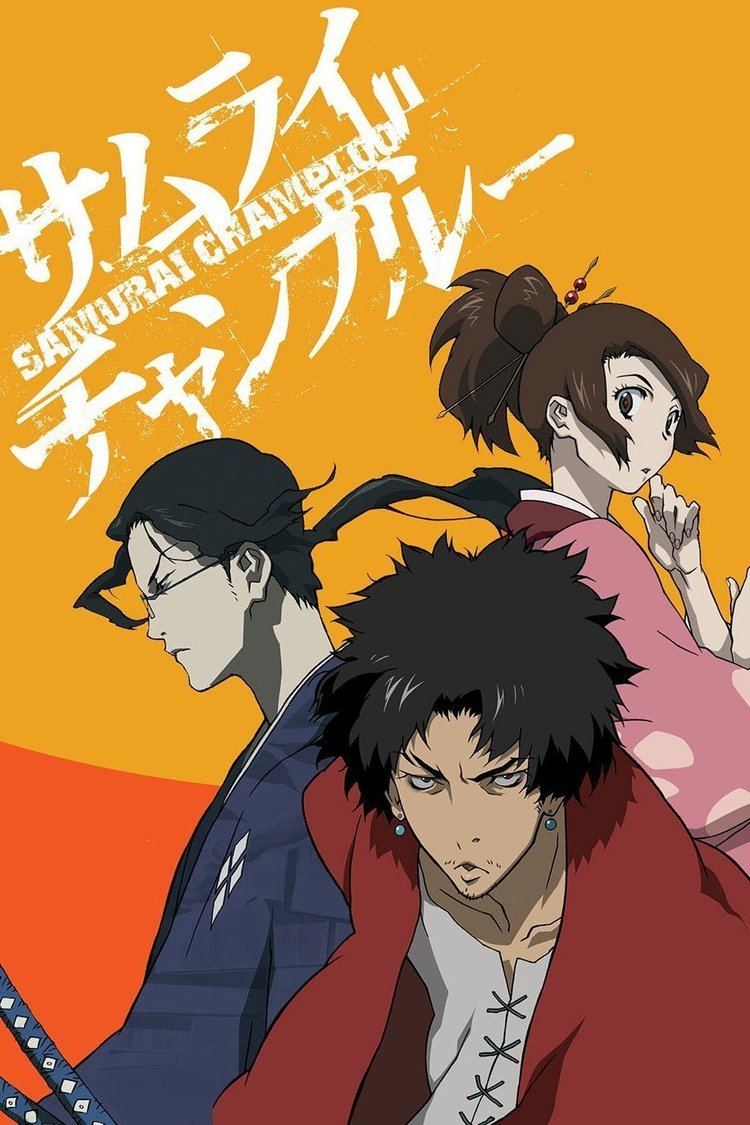 | ||||||||||||||||||||||||||||||||||
Genre Action, Adventure, Chanbara Original run January 26, 2004 – September 26, 2004 Characters Fuu, Kagetoki Kariya, Mugen, Umanosuke, Rikiei Similar Cowboy Bebop, Samurai 7, Eureka Seven, The Big O, Michiko & Hatchin | ||||||||||||||||||||||||||||||||||
Samurai Champloo (Japanese: サムライチャンプルー, Hepburn: Samurai Chanpurū), stylized as SAMURAI CHAMPLOO, is a Japanese anime series developed by Manglobe. It featured a production team led by director Shinichirō Watanabe, character designer Kazuto Nakazawa and mechanical designer Mahiro Maeda. Samurai Champloo was Watanabe's first directorial effort for an anime television series after the critically acclaimed Cowboy Bebop. It was first broadcast in Japan on Fuji TV on May 20, 2004 and ran for twenty-six episodes until its conclusion on March 19, 2005.
Contents
- Plot
- Setting and style
- Historical context and Western influence
- Sexuality
- Characters
- Episodes
- Production
- Media
- Anime
- Manga
- Soundtracks
- Video game
- Reception
- References
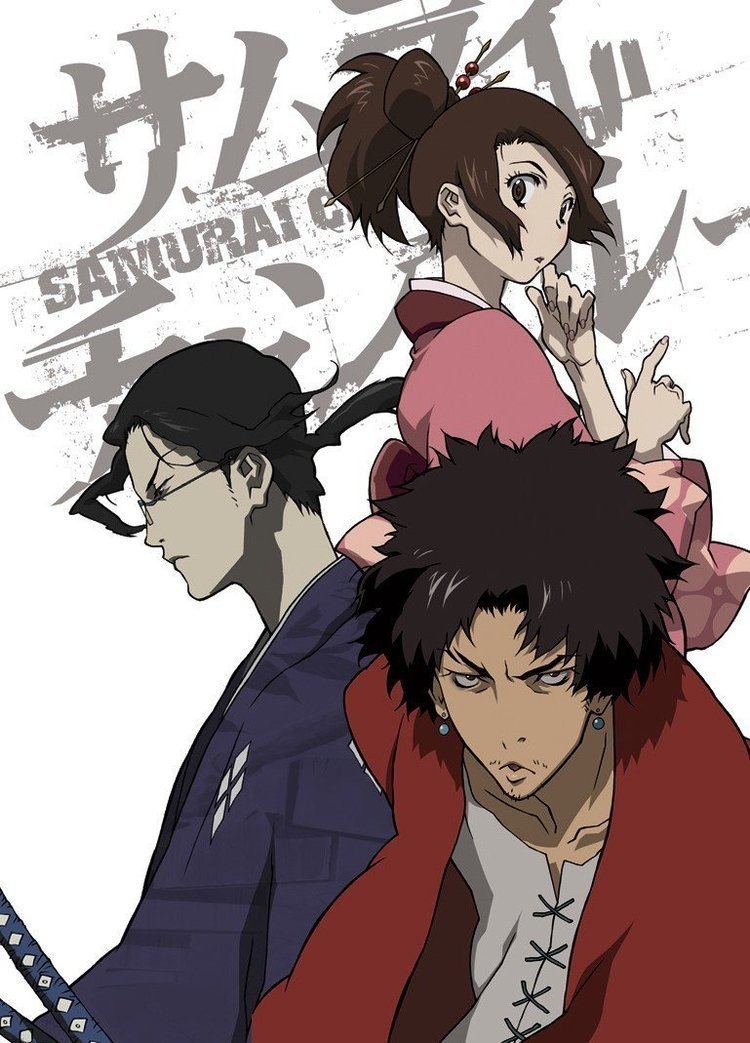
Samurai Champloo is set in an alternate version of Edo-era (1603 to 1868) Japan with an anachronistic, predominantly hip hop, setting. It follows Mugen, an impudent and freedom-loving vagrant swordsman; Jin, a composed and stoic rōnin; and Fuu, a brave girl who asks them to accompany her in her quest across Japan to find the "samurai who smells of sunflowers".
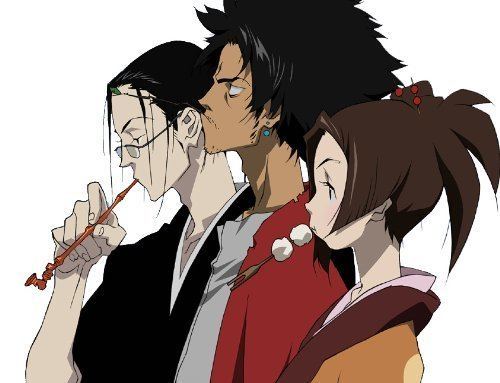
Samurai Champloo has many similarities to Shinichirō Watanabe's other work Cowboy Bebop. Both series are critically acclaimed, focus on mixing genres, follow an episodic narrative design, and utilize contemporary music.
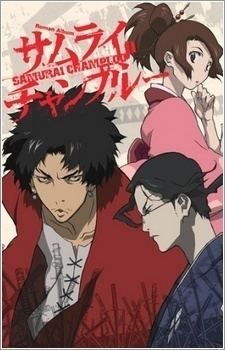
Samurai Champloo was dubbed in the English language and licensed by Geneon Entertainment for releases in North America. Funimation began licensing the series after Geneon ceased production of its titles. It was also licensed for English releases in the United Kingdom by MVM Films, and in Australia and New Zealand by Madman Entertainment.

Plot
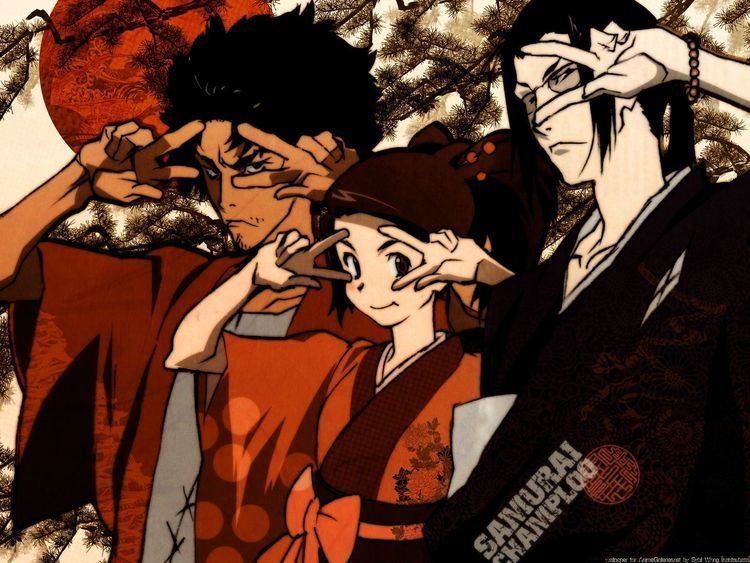
A young woman named Fuu is working as a waitress in a tea shop when she is abused by a band of samurai. She is saved by a mysterious rogue named Mugen and a young rōnin named Jin. Mugen attacks Jin after he proves to be a worthy opponent. The pair begin fighting one another and inadvertently cause the death of Shibui Tomonoshina, the magistrate's son. For this crime, they are to be executed. With help from Fuu, they are able to escape execution. In return, Fuu asks them to travel with her to find "the samurai who smells of sunflowers".
Setting and style

Samurai Champloo employs a blend of historical Edo-period backdrops with modern styles and references. The show relies on factual events of Edo-era Japan, such as the Shimabara Rebellion ("Unholy Union"; "Evanescent Encounter, Part I"); Dutch exclusivity in an era in which an edict restricted Japanese foreign relations ("Stranger Searching"); ukiyo-e paintings ("Artistic Anarchy"); and fictionalized versions of real-life Edo personalities like Mariya Enshirou and Miyamoto Musashi ("Elegy of Entrapment, Verse 2"). The content and accuracy of the historical content is often distorted via artistic license.
Historical context and Western influence
Samurai Champloo contains many scenes and episodes relating to historical occurrences in Japan's Edo period. In episode 5 ("Artistic Anarchy"), Fuu is kidnapped by the famous ukiyo-e painter Hishikawa Moronobu, a figure prominent in the Edo period's art scene. Episode 23 ("Baseball Blues") pins the main characters in a baseball game against Alexander Cartwright and a team of American baseball players trying to declare war on Japan. As for Western influences, the opening of the show as well as many of the soundtracks are influenced by hip hop. In episode 5, Vincent van Gogh is referenced at the end in relation to Hishikawa Moronobu's ukiyo-e paintings. A hip hop singer challenges the main characters in episode 8 ("The Art of Altercation") and uses break dance throughout. In episode 18 ("War of the Words"), graffiti tagging, a culturally Western art form, is performed by characters as an artistic expression and form of writing. The ending of the episode has Mugen writing his name on the roof of Hiroshima Castle, the palace of the daimyō in Edo Japan.
Sexuality
The topics of sex and sexual orientation are shown multiple times in Samurai Champloo. One topic that is frequently shown regarding sexuality is the use of brothels and prostitution. Brothels are seen in multiple episodes and are significant to the plot. The show includes Yakuza brothel ownership, characters being sold into prostitution and other issues regarding the subject. Another topic in the show is homosexuality, with one episode revolving around a homosexual Dutchman. This episode makes the claim that Edo-period Japan had liberal expressions of homosexuality that can most easily be compared to ancient Greece.
Characters
Apart from this trio, other characters tend to appear only once or twice throughout the series.
Episodes
The episodes of the anime series Samurai Champloo were produced by Manglobe and written and directed by Shinichirō Watanabe. The first episode premiered in Japan on Fuji Television on May 20, 2004 where it ran for 26 episodes until its conclusion on March 19, 2005.
Production
Samurai Champloo is considered to be an example of the popular chanbara film and television genre. Trademarks include the Edo setting, a focus on samurai or other swordsman characters, and lots of thrilling, dramatic fights. Chanbara was used in the early days of Japanese cinema (when government political censorship ran high) as a way of expressing veiled social critiques.
The word champloo comes from the Okinawan word chanpurū (as in gōyā chanpurū, the Okinawan stir-fry dish containing bitter melon). Chanpurū, alone, simply means "to mix" or "to hash".
Media
Samurai Champloo premiered in Japan on May 20, 2004 on Fuji Television, and concluded on March 19, 2005, spanning a total of 26 episodes. It was also aired in Japan on Animax.
Anime
Geneon licensed the show for distribution in North America almost a year prior to the show's airing in Japan. An English dub of the series premiered in the United States on the Adult Swim anime block on May 14, 2005. The version aired was edited and had foul language replaced with sound effects, in addition to cutting out blood and nudity. The final first run of the episodes concluded on March 18, 2006. Samurai Champloo debuted in Canada on December 24, 2006, on the digital station Razer. The series has also aired in the United Kingdom, France, Latin America, Australia, New Zealand, Poland, Mexico, Portugal, Spain and Germany. Funimation has distributed Samurai Champloo for Geneon since they ceased in-house distribution of their titles in 2007. Geneon, in association with Funimation, re-released the entire 26-episode anime series in a box set in June 2009 and on Blu-ray in November 2009. As of November 26, 2010, Funimation has fully licensed the series and once again released the series under the Classics line on May 24, 2011.
The anime series made its return to US television on FUNimation Channel starting March 21, 2011. The series returned to Adult Swim on January 2, 2016, this time part of the revived Toonami block, replacing Michiko & Hatchin.
The episodes use six pieces of theme music. "Battlecry", performed by Nujabes and Shing02, is the opening theme for all twenty six episodes. "四季ノ唄 (Shiki no Uta, Song of Four Seasons)" by Nujabes and Minmi is the primary ending theme, except for four episodes. Episode 12 uses Minmi's "Who's Theme" as its ending, episode 17 uses "You" by Kazami, 23 uses "Fly" by Tsutchie, and the final episode uses the song "San Francisco" by Midicronica.
Manga
A Samurai Champloo manga debuted in Shōnen Ace on January 26, 2004 and ended on September 26, 2004. Tokyopop licensed the manga in an English-language release in North America and Madman Entertainment lit for an English release in Australia and New Zealand. It is also licensed for a Portuguese-language and Spanish-language release in Brazil and Spain by Panini. There are 2 volumes in this series.
Soundtracks
Music used in the series was released across four CD soundtracks by Victor Entertainment. The first, Samurai Champloo Music Record: Masta, was released on June 23, 2004. Produced by Shinichirō Watanabe's longtime friend DJ Tsutchie and the Japanese hip hop duo Force of Nature, the album features 18 instrumental tracks and one mid-tempo ballad sung by R&B songstress Kazami. Samurai Champloo Music Record: Departure was released on the same date, containing 17 tracks, with two being vocal pieces performed by rap artist Shing02 and R&B singer Minmi. The album was produced by Japanese DJ/producer Nujabes and American MC/producer Fat Jon.
Two additional soundtracks followed on September 22, 2004. Samurai Champloo Music Record: Playlist contained an additional 18 tracks, all created by Tsutchie, with only one being a vocal piece: a remix of the first album's song "Fly", performed by Azuma Riki of the hip hop group Small Circle of Friends. The final album, Samurai Champloo Music Record: Impression, features 23 tracks from Force of Nature, Nujabes and Fat Jon. Rap artists Suiken and S-word, members of Tokyo rap group Nitro Microphone Underground, provide guest vocals and Minmi performs the final song on the album.
Two separate soundtracks, Samurai Champloo Music Record: Katana as well as Samurai Champloo Music Record: Playlist, were released in 2004 by Geneon Entertainment only in North America. They bear most of the same tracks as the Japanese albums.
Video game
Grasshopper Manufacture developed a video game for the PlayStation 2 based on the series entitled Samurai Champloo: Sidetracked; however, the manufacturer has stated that the game has no relation to the events depicted in the show. The soundtrack was composed by Masafumi Takada and Jun Fukuda, while it was written by Goichi Suda. It was released on February 23, 2006 in Japan and on April 11, 2006 in the United States. It received mixed reviews. The game is notable for giving Mugen's distinctive sword a name, "Typhoon Swell"; it was never called by this name in the anime or manga series.
Reception
Samurai Champloo received critical acclaim, with many critics and scholars praising the unique blend of genres and influence of music within the series. The ambient soundtrack recorded by artists Fat Jon, Force of Nature, Tsutchie and the late Nujabes received very high critical acclaim, ranking among the Top Ten Anime Themes and Soundtracks of All Time. Samurai Champloo was listed at #10, with Cowboy Bebop taking the #1 spot.
A scholastic essay was penned by writer Jiwon Ahn about the series and its relationship to western culture, as well as various television and film genres. The essay was published in the textbook How to Watch Television, and is currently used at the USC School of Cinematic Arts. In her essay, Ahn refers to the series as "a rich text to examine within the analytical framework of auteurism and genre theory."
